Indian Space Progress #20–21: ISRO’s plan to study Venus alongside NASA and ESA
Also in this special edition: ISRO’s ambitions to fetch samples from the Moon, build a space station, and develop a heavy-lift rocket!
At over 4,000 words, this is my longest article ever. In one fell swoop, the Indian Government sanctioned multiple flagship space projects last month. And so in this special edition of ‘Indian Space Progress’, I contextualize them all. In particular, I noticed that nobody covered the planned science and rationale of India’s first mission to Venus or put it in context with the upcoming NASA and ESA missions to the planet. And ISRO’s announcement reads like jargon-land. So I’m attempting a full rundown here. ☕️+🤓
Shukriya for Shukrayaan (Thank you for the Venus craft)
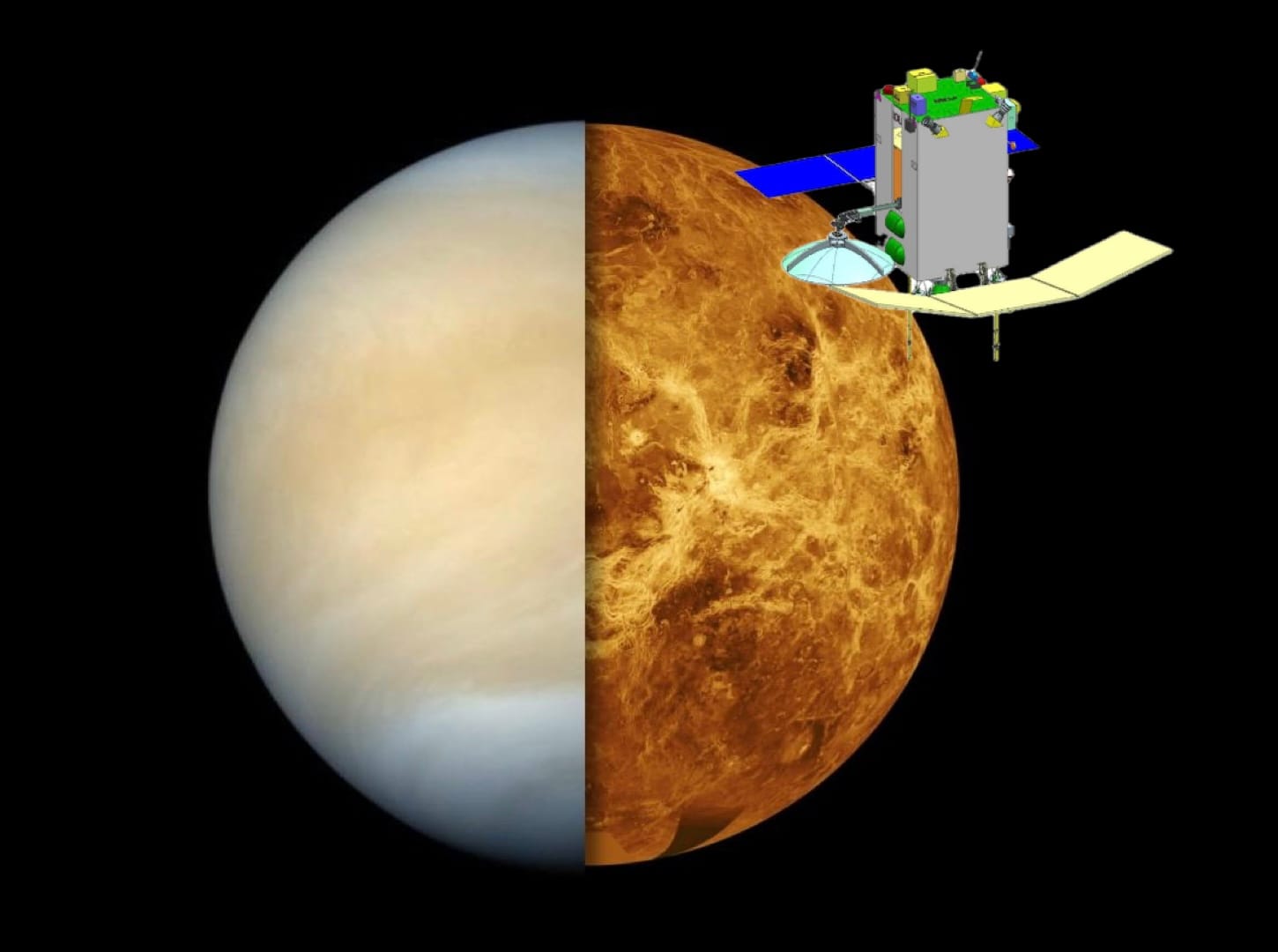
On September 18, the Indian Government Union Cabinet approved ISRO’s proposed Venus Orbiter Mission (VOM) with a budget of about $150 million.
Formerly called Shukrayaan, VOM will launch on the Launch Vehicle Mark III (LVM3)—India’s most powerful rocket—during the Venus launch window of March 2028. After reaching Venus in four months, VOM will fire its engines to reduce its velocity and enter a highly elliptical polar orbit of 500 by 60,000 kilometers. It will then use Venus’ atmosphere to gradually aerobrake over months and lower its orbit to 200 by 600 kilometers. From there, VOM will employ its dozen plus instruments for over five years to study Venus’ surface, subsurface, atmosphere, and how the latter’s activities are shaped by the Sun’s wind. Three of the instruments have foreign contributions: from Russia, Sweden, and Germany.
The big picture
Venus right now is an inhospitable hellscape but it wasn’t always this fiery. Past missions like ESA’s Venus Express orbiter and NASA Galileo have observed granite-like rocks on the planet’s surface, which require abundant water to form. Scientists think Venus may have had liquid water seas for two billion years—far longer than Mars, which likely hosted surface water for 300 million years. Could Venus once have hosted life? How did Earth’s “sister planet” go from being potentially habitable to hell? Is its temperature-soaring natural greenhouse effect a concern for Earth’s future? Exploring Venus to understand its evolution will help scientists answer these questions, better model Earth’s climate, and gain insights on what makes our planet a haven for life.
Scientists also use Venus as a reference to understand conditions on Earth-sized planets around other stars in the Universe, how they could evolve, how likely they are to support life, and therefore how we should define habitable zones around stars. Understanding Venus advances our search for alien life.
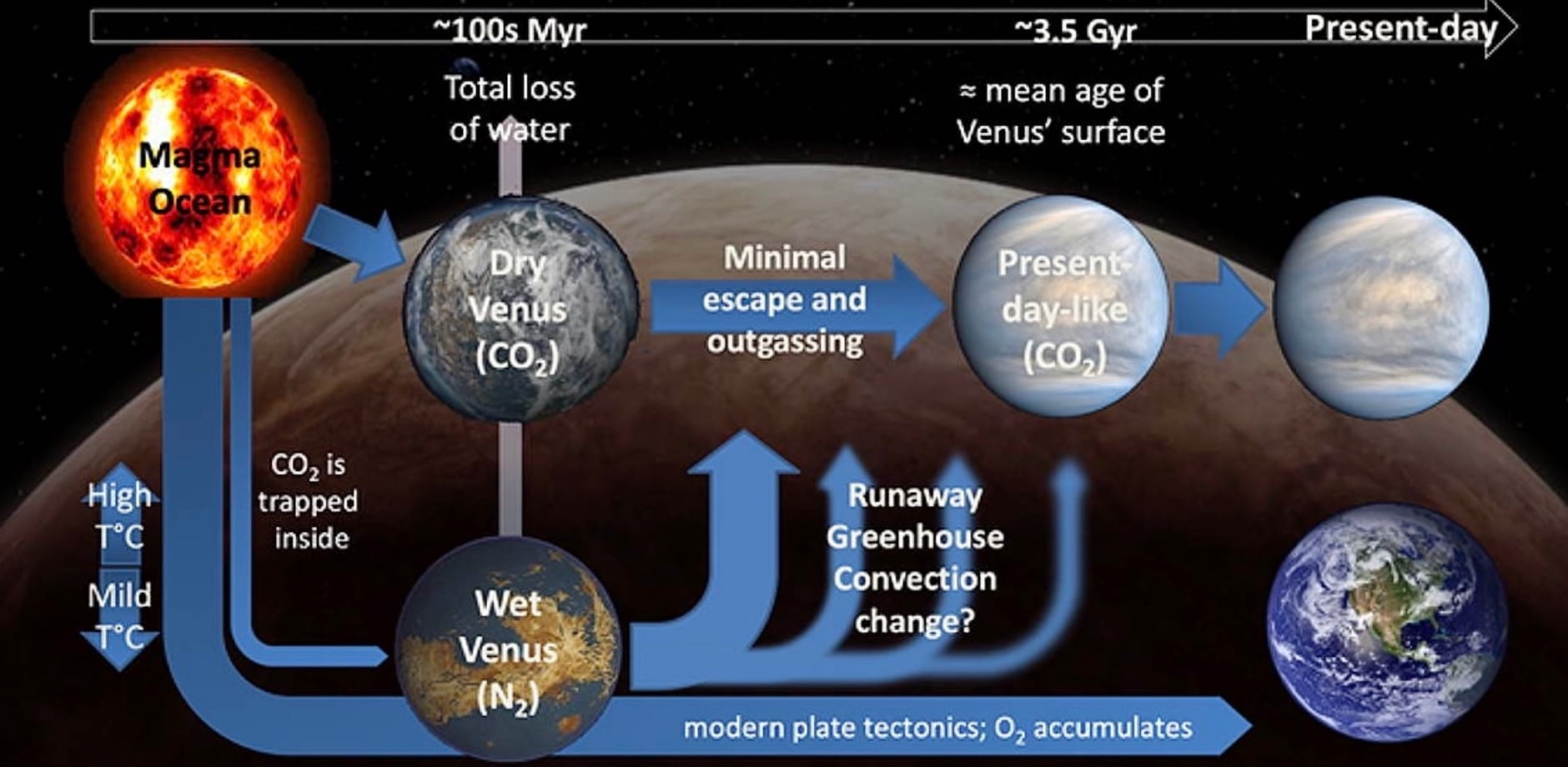
With this context of the importance of studying Venus, let’s come back to ISRO’s Venus orbiter. It’s important to note that not only will VOM be India’s first mission to the planet but it will arrive there a little before NASA’s VERITAS and ESA’s EnVision orbiters do, and that it will sport instruments akin to both. The three missions converge on a single goal: understanding Venus’ past and therefore how and why it diverged from being Earth-like to a zone of hell. VOM’s inclusion in the global Venus exploration manifest therefore presents three opportunities:
- one for India to conduct uniquely impactful science and advance its wish to become a planetary science powerhouse
- one for scientists globally, who will be able to combine similar as well as complementary datasets from flagship Venus missions of three space agencies
- and the most potent of all: an opportunity for the space agencies sending these craft to coordinate observations to gain more science than the sum of its parts.
Seeing through the clouds
Building on the radar ISRO built for the Chandrayaan 2 orbiter currently at the Moon, VOM will have an S-band Synthetic Aperture Radar to make a global map of Venus at 20–30 meters/pixel, which is more than four times the resolution of the Magellan mapping orbiter NASA launched in 1989. NASA plans to send the VERITAS orbiter in 2031, whose radar will map Venus’ surface at 30 meters/pixel from a 250-kilometer polar orbit. These observations from VOM and VERITAS will help scientists better understand how Venus’ surface was shaped over tens to hundreds of millions of years to what it is today.
VOM will also carry a subsurface sounder, making it the first to see parts of Venus’ subsurface. ESA EnVision orbiter launching no earlier than 2031 will use a similar ground penetrating radar to see terrain up to a kilometer below the surface from its roughly 600-kilometer polar orbit. Together, VOM and EnVision will help scientists identify buried craters and possibly large basins formed around 4 billion years ago when large asteroids and comets were bombarding the inner Solar System. But if it turns out that Venus lacks impact basins like other rocky worlds such as the Moon do, it would mean the planet’s surface and crust have been actively reshaped for that long.
While most spacecraft can use typical spectrometers to detect the surface composition of a planet, the thick and dense Venusian clouds make it almost impossible for such instruments to scan the surface. However, there are specific wavelengths of infrared light that Venus’ atmosphere is transparent to, and spectrometers on the upcoming ISRO, NASA, and ESA orbiters will observe in exactly such literal windows of opportunity.
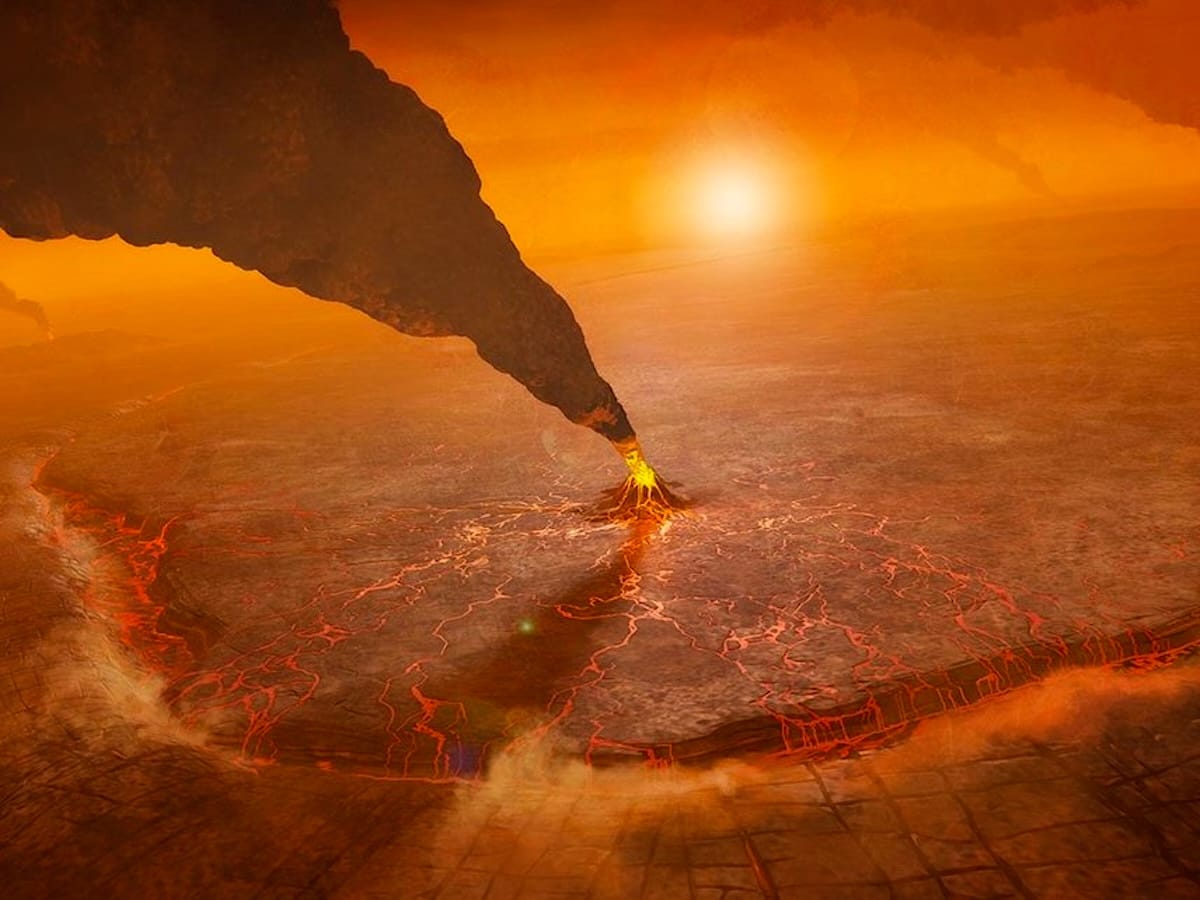
VOM will sport a 200-band hyperspectral infrared imager. Coupled with radar measurements, it will help scientists identify volcanic hotspots on Venus such as glowing lakes of lava. EnVision will have an infrared spectrometer too to detect trace amounts of volcanic gases in the planet’s atmosphere. The recent finding of an active volcano on Venus based on archival Magellan data will make these observations only more intriguing. Understanding how Venusian volcanoes work will help scientists understand how the planet maintains an atmosphere 50 times denser than Earth’s despite having no protective magnetic field.

Crucially, infrared spectrometers on VOM, VERITAS, and EnVision will also map minerals on Venus’ surface and identify the composition of its rocks. This will help scientists determine if some Venusian rocks were really formed or altered by abundant water as many scientists think. And if not, it would imply Venus was probably never cool enough for atmospheric water vapor to condense and form seas. Tesserae, one of the oldest regions on Venus, can help resolve this decisive question. Tesserae are highly deformed/wrinkled terrain that might move like Earth’s granite-composed continents. Infrared spectrometers on the aforementioned orbiters and a NASA-provided radar on EnVision will identify their composition and help scientists infer the processes that might shape them. If tesserae really move like Earthly continental plates, EnVision and VOM’s sub-sounding radars should see them bend and continue below the adjacent lava plains instead of registering a sharp boundary separating the two landforms.
Up above the world so high
There’s a slim chance microbial life might exist in Venus’s upper atmosphere, where mysterious dark patches absorb more than half the solar energy the planet receives. This region, approximately 50 kilometers above the surface, has Earth-like temperatures and pressures.
In September 2020, scientists announced that Earth-based radio telescopes detected phosphine molecules in the region, which could be a signature of microbial life, or some complex chemistry. But the finding got disputed soon after, post which it was being reclaimed since re-analysis using newly calibrated data showed a weaker-but-persistent phosphine signal anyway. In the meanwhile, there was independent evidence that NASA’s Pioneer probe probably detected phosphine during its atmospheric descent in 1978. And now this year a much more robust set of Earth-based observations seem to have found phosphine again.
Ultimately, up-close measurements by new missions will be needed to decipher what’s happening in Venus’ atmosphere. The infrared spectrometers on VOM, VERITAS, and EnVision might detect water vapor in erupted volcanic material, whose quantities would tell scientists if Venus holds substantial water below its crust like Earth does. If so, it would mean Venus’ interior isn’t chemically reduced—which is stable for water but not for substantial amounts of phosphine.
Similar to Japan’s recent Akatsuki Venus orbiter, a whole set of VOM instruments will study and profile cloud movements and phenomena like lightning and airglow in Venus’ atmosphere. EnVision’s ultraviolet spectrometer will particularly study the planet’s sulphuric acid clouds and the atmosphere above them. These results will allow scientists to better contextualize the potential for life in Venusian air. It will also set the stage for DAVINCI, the spherical NASA probe which will descend in Venus’ atmosphere in 2031 to precisely measure its chemical makeup all the way to the surface. It will help scientists investigate how Venus’ atmosphere formed and evolved over the last 4.5 billion years, and how much water was once present. Data from DAVINCI will conversely help calibrate some types of measurements made by VOM, VERITAS, and EnVision. Relatedly, ISRO is evaluating if it’s feasible to include an atmospheric descent probe on VOM too.
Together, these modern Venus missions will provide us with an extremely comprehensive view of Earth’s sister planet, helping us understand the planetary processes that make Earth habitable but Venus hell. Scientists hope that results from all of these missions pave the way for renewed surface exploration of Venus, including roving platforms built specifically to endure the harsh environment.
India’s patchy road to Venus

India’s Venus orbiter has survived a roller-coaster ride to get to a formal approval. It was in 2018 that ISRO released a call for instruments for the orbiter, which the agency back then hoped to get approved for launch by 2023. ISRO’s T. Maria Antonita said to a NASA-chartered planetary science planning committee in 2020 that pandemic-related delays pushed the mission’s launch target to December 2024 with a mid-2026 backup, and that the orbiter would launch on a GSLV Mk II rocket. The Mk II was a downgrade from the original plan to use the more powerful LVM3 but the mission designers were unable to secure the latter for launch since ISRO prioritized LVM3s for human spaceflight missions instead.
In fact, it wasn’t clear just a few months ago if VOM would even be approved. ISRO Chief S. Somanath told in August that the Venus orbiter “has been put on the back-burner.” Clearly, that scenario was avoided. The good news is that ISRO is trying to remove such infrastructure chokepoints. The agency is in the process of increasing the production rate and payload capacity of LVM3 over the next several years. A steady flow of LVM3s could finally allow ISRO to equitably serve not just its human spaceflight and commercial launch ambitions but its planetary missions too, which have otherwise been deprioritized even with Chandrayaan 3.
While LVM3 is indeed finally the rocket that will loft India’s Venus orbiter, it cost the agency and the country five years of delay to get here. However, VOM is also a mission that’s better late than early. Unlike India’s first Mars orbiter Mangalyaan, which was squarely a technology demonstrator, VOM is a science mission. It has more massive instruments than Mangalyaan’s payloads which totaled only 15 kilograms. Crucially, VOM will be in a polar orbit close to Venus to gather substantial scientific data—200 by 600 kilometers versus Mangalyaan’s 420 by 80,000 kilometers for Mars. Mangalyaan’s scientific output has been low simply because it was never designed to be a science mission. Even if half of VOM’s objectives are achieved, its outcome would be gladly different.
Many thanks to the Takshashila Institution, KaleidEO, PierSight and Gurbir Singh for sponsoring this special Indian Space Progress report. If you too appreciate my efforts to capture true trajectories of Indian space, kindly join them and support my independent writing.
Queue more Chandrayaans
- Details on the Chandrayaan 4 sample return mission
- Clarifying the status of LUPEX / Chandrayaan 5, the joint Indo-Japanese rover mission aiming to directly study water ice on the Moon’s south pole
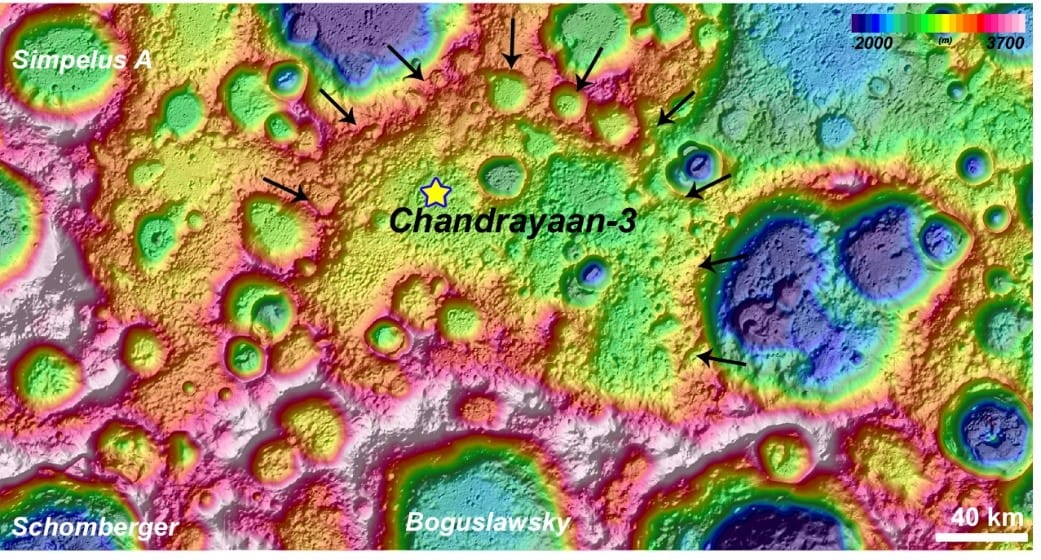
- Researchers from the ISRO-affiliated PRL institute have published a paper positing that Chandrayaan 3’s landing site lies on top of an ancient crater which spans about 160 kilometers across and is up to 4.4 kilometers deep. This inference is primarily based on ejecta trails around the landing site imaged by the mission’s Pragyan rover coupled with high-resolution views of the larger region from the Chandrayaan 2 orbiter. Scientists think the crater is well over four billion years old, and has been filled with material ejected by subsequent crater-forming impacts in the south polar region. These deposits include swaths of possible mantle material displaced by the gigantic impact that formed the South Pole-Aitken basin south of the Chandrayaan 3 landing site.
Human spaceflight plans
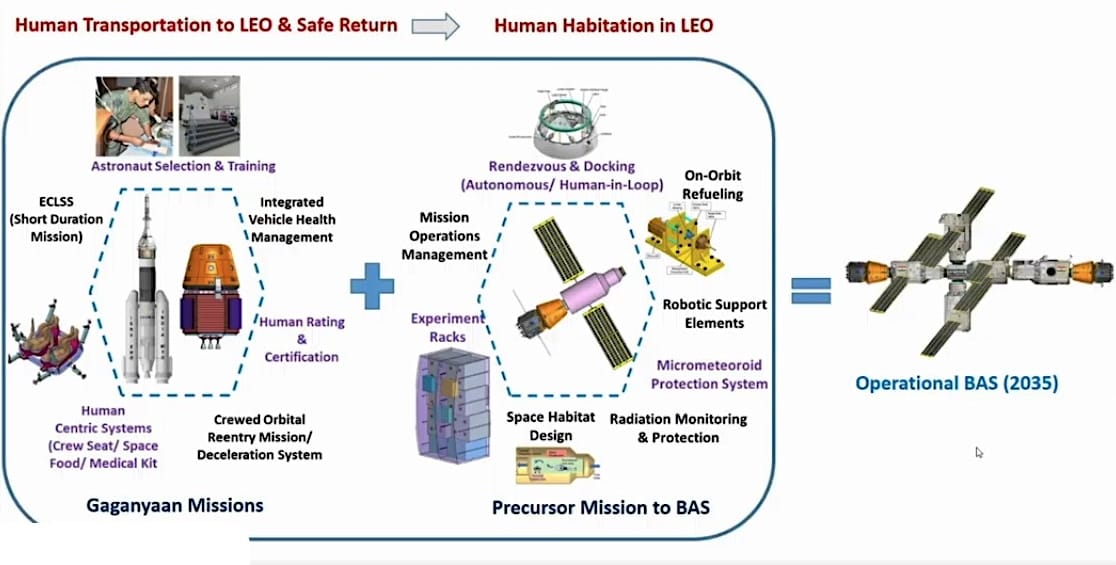
- Two of the four Gaganyaan Indian astronaut candidates, Shubhanshu Shukla and Prasanth Balakrishnan Nair, selected by ISRO are undergoing advanced training at NASA’s Johnson Space Center. Post this, Shukla will fly to the International Space Station (ISS) in 2025 via the NASA-enabled Ax-4 Axiom Space private mission aboard a SpaceX Crew Dragon capsule as the Mission Pilot—with Prasanth Nair being his backup. NASA’s international ISS partners will need to approve for the four-person Ax-4 crew to launch. Peggy Whitson, two-time ISS commander and Axiom’s Director of Human Spaceflight, told Chethan Kumar in an interview that during the mission [which she is commanding], Shukla will help with essential spacecraft operations such as navigation and docking procedures, and handle any emergencies. Shukla will also support microgravity research payloads onboard. The ISS mission will provide ISRO with experience to feed into India’s ambition to indigenously send humans to Earth orbit. The next major milestone towards that end is Gaganyaan G1, the first of three uncrewed test flights required to be successful before ISRO deems the systems safe enough to launch astronauts.
- In an interview with Chethan Kumar, Australian Space Agency Chief Enrico Palermo said that on India’s request, Australia will aid tracking of Gaganyaan missions with an in-progress ground station at the Cocos (Keeling) Islands lying between the two countries. Australia is also looking into helping during Gaganyaan emergencies too, such as if there’s a rocket abort by the crew capsule which makes astronauts splash down in Australian waters.
- On September 18, the Indian Government Union Cabinet also sanctioned $1.33 billion more (over the prior $1.1 billion) for ISRO to undertake multiple Gaganyaan missions, specifically those following the first astronaut flight and leading into deploying the first module of India’s eventual space station called the Bharatiya Antariksha Station (BAS) which has an ambitious end-of-2028 target. An excellent talk by Hanumantray Baluragi, Director of ISRO’s Directorate of Human Spaceflight Program, provides many specifics on the current—but evolving—planning of these series of Gaganyaan missions. As always, reddit user u/Ohsin has succinctly summarized these specifics.
India approves its first heavy-lift rocket. Meet the reusable NGLV
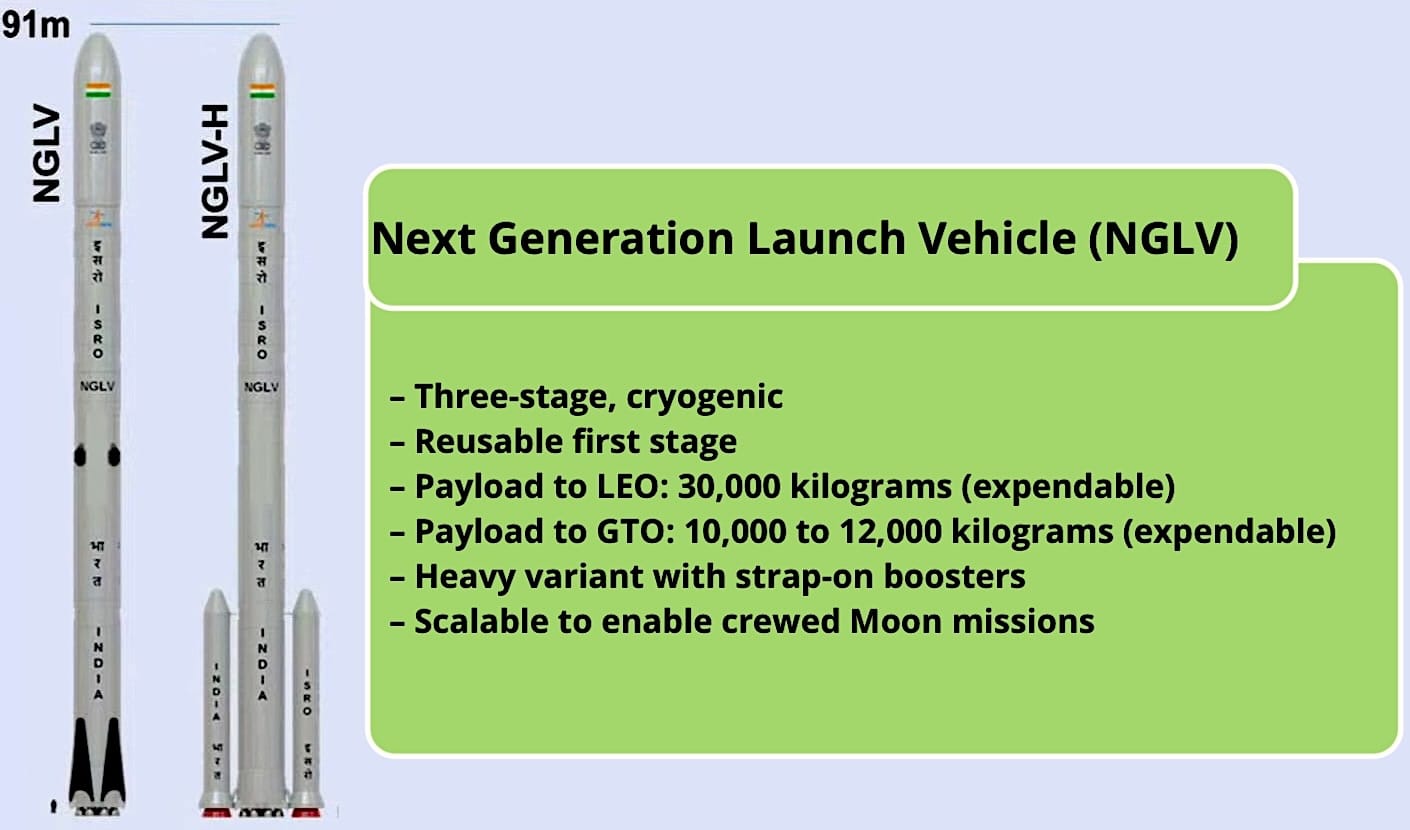
With an allocated budget of $982 million, the Indian Government Union Cabinet also approved ISRO’s proposal to make the country’s first heavy-lift rocket. Called the Next Generation Launch Vehicle (NGLV), the cryogenic rocket will be capable of lofting up to 30,000 kilograms to Low Earth Orbit in expendable mode, and 10,000 to 12,000 kilograms to GTO. That’s about thrice the oomph of India’s current most powerful rocket LVM3, which launched Chandrayaan 3 last year and two of which will lift stacks of Chandrayaan 4 later this decade.
The nearly $1 billion in NGLV funding includes development costs, three test flights by 2032, and several essential facilities. As Chethan Kumar reports, the NGLV will also need a third launch pad at India’s flagship Sriharikota spaceport, particularly to handle the rocket’s horizontal integration and to test its engines and other large components. The Indian National Space Commission approved the third launchpad in August but the Union Cabinet is yet to.
As ISRO Chief S. Somanath mentioned in an interview with YouTuber Gareeb Scientist, the agency plans to retire the GSLV Mk II rocket and possibly the PSLV as well once NGLV is operational. The Indian industry contractors part of NGLV will invest in manufacturing facilities early on to help ISRO swiftly operationalize the rocket after the first test flights. A few years after that, heavier variants of the NGLV will follow to further increase mass to orbit, something ISRO is keen on as it will enable India’s goal of sending humans to the Moon by 2040.
In the meanwhile, ISRO is working towards increasing its existing mass to orbit capabilities with LVM3. The agency is testing an engine upgrade to LVM3’s core stage, which would replace the existing two Vikas engines with an indigenously built 2000 KiloNewton semi-cryogenic kerolox engine called SCE-200. This will increase the rocket’s GTO capacity from ~4,000 kilograms to a peak of ~5,000. ISRO is also testing engine restart capability for LVM3’s cryogenic upper stage to enable more complex mission profiles. At the India Space Congress 2024 in New Delhi late June, the Director of ISRO’s Liquid Propulsion Space Center, V. Narayanan, said that the target to launch an SCE-200 on an LVM3 is 2027, a point in time later than originally expected but still early enough to be leveraged by the upcoming complex Chandrayaan and initial Gaganyaan missions. Furthermore, ISRO recently announced ramping up LVM3’s production from the current rate of two a year to four and then six.
That was one exhaustive edition of Indian Space Progress! Thank you once again to the Takshashila Institution, KaleidEO, PierSight and Gurbir Singh for sponsoring this report, which allowed me the time and space to research and contextualize the new flagship developments shaping India’s space ambitions.
If you too appreciate my efforts to capture true trajectories of Indian space, kindly join them and support my independent writing. 🚀
